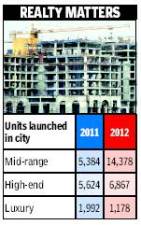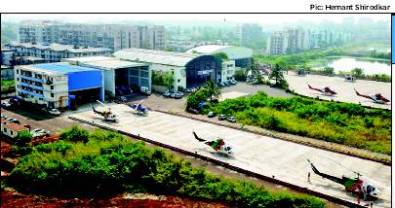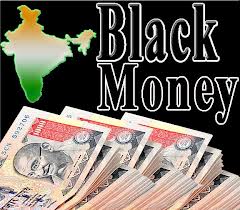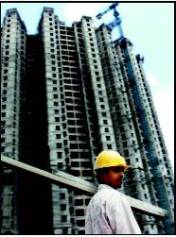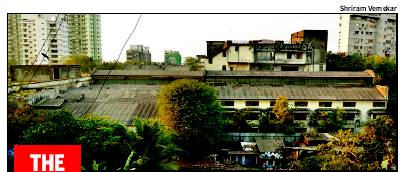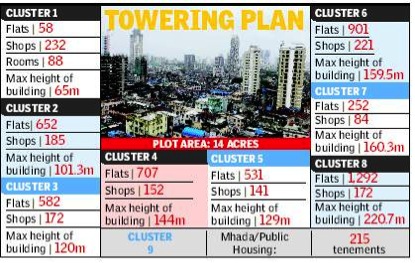Mumbai: The city’s builders have enriched the Brihanmumbai Municipal Corporation (BMC) by nearly Rs 1,000 crore within a few months. Between April and December 2012, India’s richest civic body raked in Rs 938 crore as premium from developers seeking to utilize 35% extra floor space index (FSI) for their residential projects. The huge collection comes at a time when the property market is virtually stagnant.
The new policy formulated by the previous municipal commissioner, Subodh Kumar, and approved by the state government a year ago has finally reaped a huge dividend for the BMC. “We expect this amount to touch Rs 1,500 crore by the end of the financial year in March,” civic chief Sitaram Kunte told TOI.
The money accrued from builders will be ploughed back to augment Mumbai’s civic infrastructure—roads, sewage and water supply. The premium for what is termed as “fungible FSI” in the construction industry is all set to become the third largest money-spinner for the civic administration.
“After octroi and property tax, the premium on fungible FSI will be our major source of income this year,” said Kunte. The BMC hopes to collect Rs 7,000 crore as octroi and Rs 3,300 crore as property tax by the end of this financial year.
The first builder in Mumbai to pay the premium was Nayan Shah of Mayfair Housing. The Runwal Group is believed to have paid one of the highest premiums of around Rs 70 crore for its housing project in Mulund.
Kumar formulated the new policy to streamline the non-transparent and highly corrupt building approvals system. It curtails the municipal commissioner’s discretionary powers to grant building concessions to developers. Earlier, municipal commissioners liberally cleared projects with unusually large flower beds, voids, lily ponds and car decks. These areas are not included in the building’s FSI. These concessions allowed developers to build an additional 50% to 80% above the permitted built-up area.
The developer would sell these free spaces to buyers at market rate and then encourage them to illegally amalgamate these areas to make the apartment bigger.
Most building files will now be approved at the civic executive engineer’s level. Only in rare cases will they be put up before the commissioner.
THE MONEY-SPINNER
Between April and December 2012, the BMC raked in `938 crore as premium from developers seeking to utilize 35% extra floor space index (FSI) for their residential projects
The biggest chunk of premium has come from builders in the western suburbs between Bandra and Dahisar. As much as 522 crore or more than half the total collection in the past nine months came from this region alone
Developers in the eastern suburbs between Ghatkopar and Mulund paid about 333 crore during this period
The island city, where property prices are the highest in some enclaves, contributed 83 crore to the civic kitty
The maximum monthly collection ( 348 crore) was made in last December In all, 715 applications were made by builders to avail of fungible FSI in this period
Source : TOI


